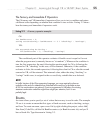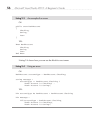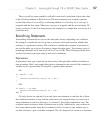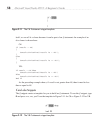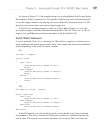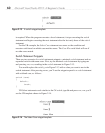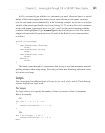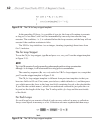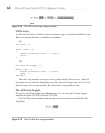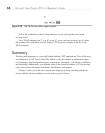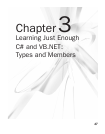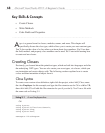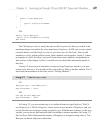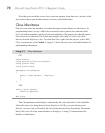
Chapter 2: Learning Just Enough C# or VB.NET: Basic Syntax 63
and hold objects in memory in different forms, which could be Stack, List, Queue, and
more. Here’s an example that loops on an array of strings:
C#:
string[] people = { "Megan", "Joe", "Silvia" };
foreach (var person in people)
{
Console.WriteLine(person);
}
VB:
Dim people = {"Megan", "Joe", "Silvia"}
For Each person As String In people
Console.WriteLine(person)
Next
In this example, people is an array of strings that contains three specific strings of
text. The block of the loop will execute three times, once for each item in the array. Each
iteration through the loop assigns the current name to person.
The For Each Loop Snippet
To add code using a for each snippet in C#, type fore and press TAB, TAB, which results in
the snippet template shown in Figure 2-17.
The for each loop snippet gives you three fields to complete. The var is an implicit
type specifier that allows you to avoid specifying the type of item; the compiler figures
that out for you, saving you from some keystrokes. The item field will be a collection
element type. You may leave var as is or provide an explicit type, which would be string
in this case. You can tab through the fields to add meaningful identifiers for the item and
collection you need to iterate through.
To execute the VB For Each snippet, type ?,
TAB, C, ENTER, C, ENTER, f, ENTER and
you’ll see the For Each loop template shown in Figure 2-18.
Figure 2-17 The C# for each loop snippet template



